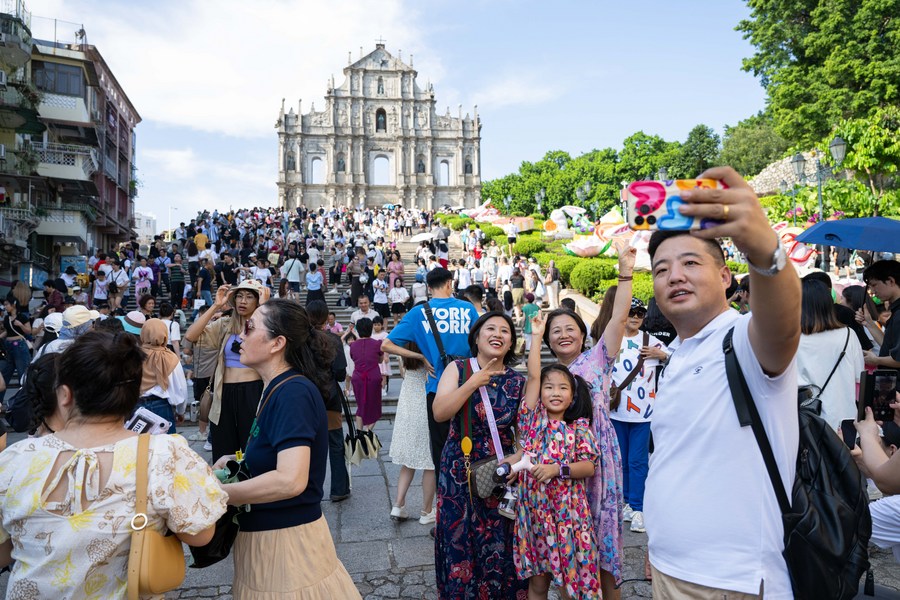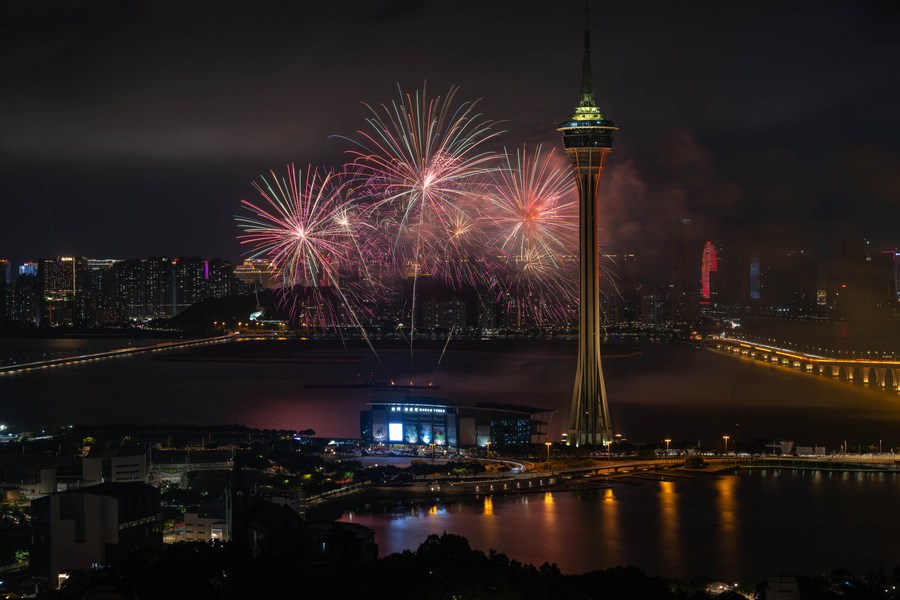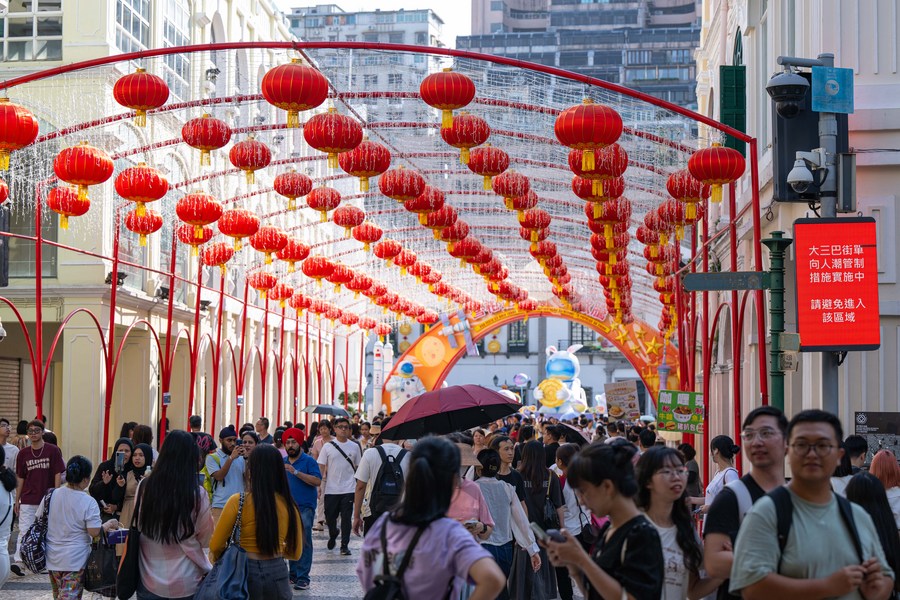
Visitors are seen at the Ruins of St. Paul's in Macao, south China, Oct. 1, 2023. (Xinhua/Cheong Kam Ka)
During China's eight-day holiday through Friday, Macao recorded a daily average of 116,000 visitor arrivals, an increase of 3.6 times from the same period of last year.
MACAO, Oct. 8 (Xinhua) -- China's eight-day Mid-Autumn Festival and National Day holiday has sparked a travel boom in its Macao Special Administrative Region (SAR), with visitor arrivals and hotel occupancy rates hitting record highs since the COVID-19 pandemic.
During the holiday from Sept. 29 to Oct. 6, Macao recorded a daily average of 116,000 visitor arrivals, an increase of 3.6 times from the same period of last year, the Judiciary Police under the Macao SAR government said on Saturday.
Among the over 930,000 visitor arrivals in total, 709,000 were from the mainland, nearly three times higher than the same period of last year, while 171,000 were from the Hong Kong SAR, a surge of around 10 times year on year.
Data from the hotel industry showed that the average hotel occupancy rate during the holiday reached 87.9 percent, up 23.7 percentage points from last year's National Day holiday. The hotel occupancy rate for Oct. 1 this year hit 94.3 percent, a record high this year.

Photo taken on Oct. 1, 2023 shows a fireworks display in Macao, south China. (Xinhua/Cheong Kam Ka)
This year's Mid-Autumn Festival and National Day holiday is the longest public holiday in the second half of the year in China, encouraging many Chinese to hit the road.
Tourists were seen crowding the narrow streets of Macao and queuing in front of local specialty stores, forcing hot tourist spots to enforce limits on crowds.
On the evening of Oct. 1, a fireworks show was staged in Macao as part of the 31st Macao International Fireworks Display Contest.
A tourist from Shanghai with the surname of Xu livestreamed the fireworks show. "It is particularly jolly and meaningful to watch such a grand show on National Day," she told Xinhua.
To further diversify its tourism market, the Macao SAR government has made continuous efforts to tap the potential for community economy by turning historical communities into areas with cultural and leisure touches.
During this holiday, the area surrounding Rua da Felicidade, a centuries-old street in the center of Macao Peninsula, was turned into a pedestrian zone featuring art installations, markets, games and performances, giving local residents and tourists a chance to experience Macao's history.

Visitors are seen at the Senado Square in Macao, south China, Sept. 30, 2023. (Xinhua/Cheong Kam Ka)
On the evening of the Mid-Autumn Festival, when the Chinese celebrate family reunions, two outdoor concerts themed on the moon were staged in front of the landmark Ruins of St. Paul's, inviting local residents and tourists alike to indulge in the joyous moments.
Industry insiders believed that Macao's tourism market was rapidly recovering after the pandemic, voicing full confidence in its future performance.
"This is exciting," said Cheung Kin Chung, president of the Macao Hoteliers and Innkeepers Association. "We look forward to the performances of the tourism industry for the whole year and new tourism elements generated in the building of the Guangdong-Macao In-depth Cooperation Zone in Hengqin, neighboring Zhuhai city."
Lou Chi Leong, chairman of the association, said Macao's hotel industry had generally recovered to around 80 percent of the level before the pandemic in 2019.
Li Xi, executive associate dean of the Faculty of International Tourism and Management of the City University of Macao, pointed out the challenges facing Macao in terms of infrastructure and services during travel peaks.
"In the long run, Macao should think about how to stabilize tourist flow and strike a balance between quality and quantity," Li added.




 A single purchase
A single purchase









